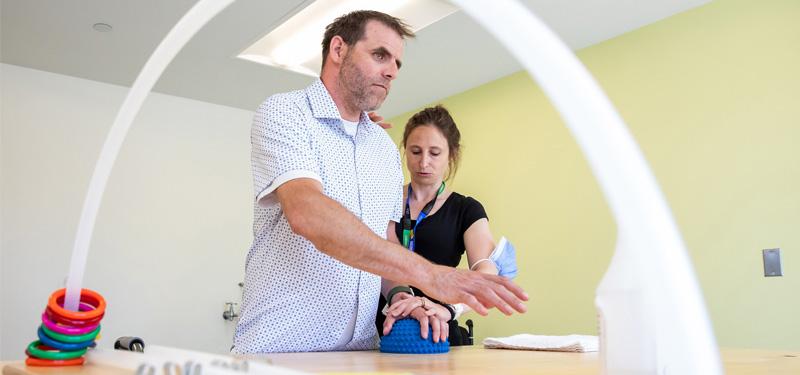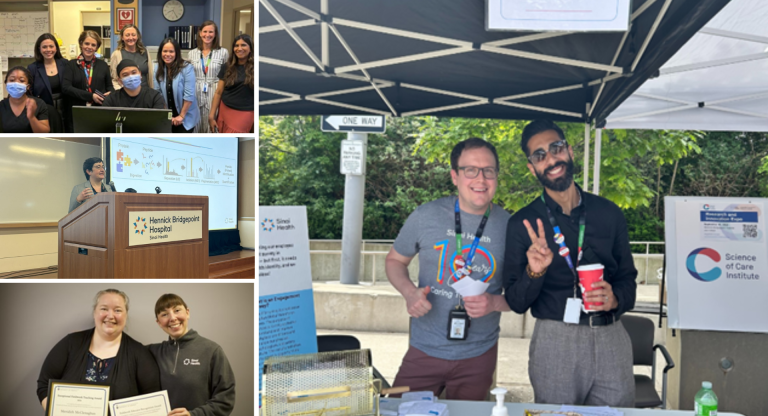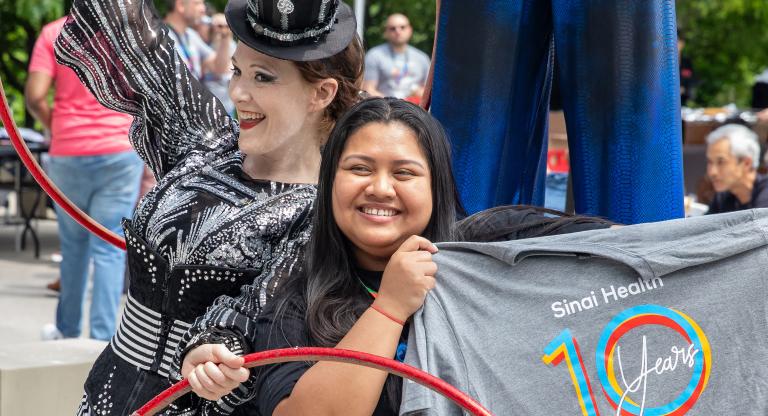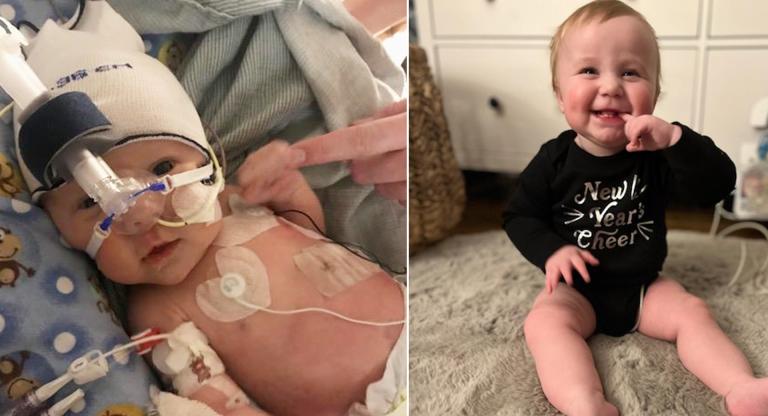Offering patients hope following a stroke

The morning after Halloween 2023, John Crawford woke up unable to move. He had no idea what was wrong.
Then living in Muskoka, John, now 40, had spent the previous evening playing hockey, then spent time talking with his roommate before going to bed.
During the night, a blood clot had lodged in a vessel in John’s brain, blocking blood flow. He had experienced a stroke. (While strokes become far more common after 55, they can strike at any age. In fact, one quarter occur in people under 65, according to the Public Health Agency of Canada.)
But John’s luck was about to turn. For one, it was one of the rare days his roommate was home, and not travelling for work. “He heard me fall, and I was mumbling, and I had slurred speech,” John says. Although the roommate didn’t recognize these as signs of stroke, another friend arrived who did, and he immediately called an ambulance.
Initially, it looked as if John might be confined to bed with a feeding tube. And though he did regain some movement during his stay in an acute care hospital, then a smaller physiotherapy facility, “they wanted to put me in a power wheelchair,” John says.
Still, John’s medical team advocated to transfer his care to Toronto’s Hennick Bridgepoint Hospital, which is recognized for the exemplary quality of its Stroke and Neurological Rehabilitative Care.
John soon realized he was in good hands. “The care I received at Hennick Bridgepoint was above and beyond any expectations you could have,” he says. “They’re a fabulous bunch of people. I turned 40 at the hospital, and they had a banner for me that said happy birthday—it’s like a family.”
“We engage in best practices. It takes people that are really eager and invested in what they do to create a high-performing team collaborates in pushing these boundaries of care. We have a lot of passion for the people that we serve, and it comes through in our delivery of care.”
This care was most recently recognized in the unit’s achievement of its fourth Stroke Distinction, awarded through Accreditation Canada.
That commitment and enthusiasm also underlies a number of initiatives that make the program exceptional, such as monthly education sessions for staff, and new hire orientation for nurses, which involves shadowing team members from different health disciplines. The team has also developed a stroke education video series that has gained a worldwide following. And continuous quality improvement programs have yielded a number of benefits. Just one example: wait times for heart monitor results that look for abnormal heart rhythms (a risk factor for stroke) have been shortened from weeks to days, ensuring that patients needing preventive medications receive them as soon as possible.
For patients like John, this translates into the best chance of regaining lost mobility and skills. With the help of his care team, John recovered the ability to speak clearly, and do everyday activities like dressing himself. He’s also walking again. Earlier this month, he and girlfriend Heather Gibson (who he calls his biggest supporter) covered four kilometres. Today, he continues to attend two outpatient physiotherapy sessions a week to work on recovering use of his dominant left hand, but here, too, he’s making progress. He recently cooked dinner for the first time since the stroke.
“I have so many people to thank. I’m so grateful for all of their help, and am forever in their debt,” John says. “One day, I was listening to a song, drinking coffee, and the sun was on my face, and I started crying and couldn’t stop. I just felt so lucky to be alive and not paralyzed, and able to speak.”
June is Stroke Awareness Month. The acronym B.E. F.A.S.T (balance loss, eyesight changes, facial drooping, arm weakness, speech changes, time to call 911) can help identify the signs of a stroke and when to seek help. Please visit the Heart and Stroke Foundation of Canada for more information.












